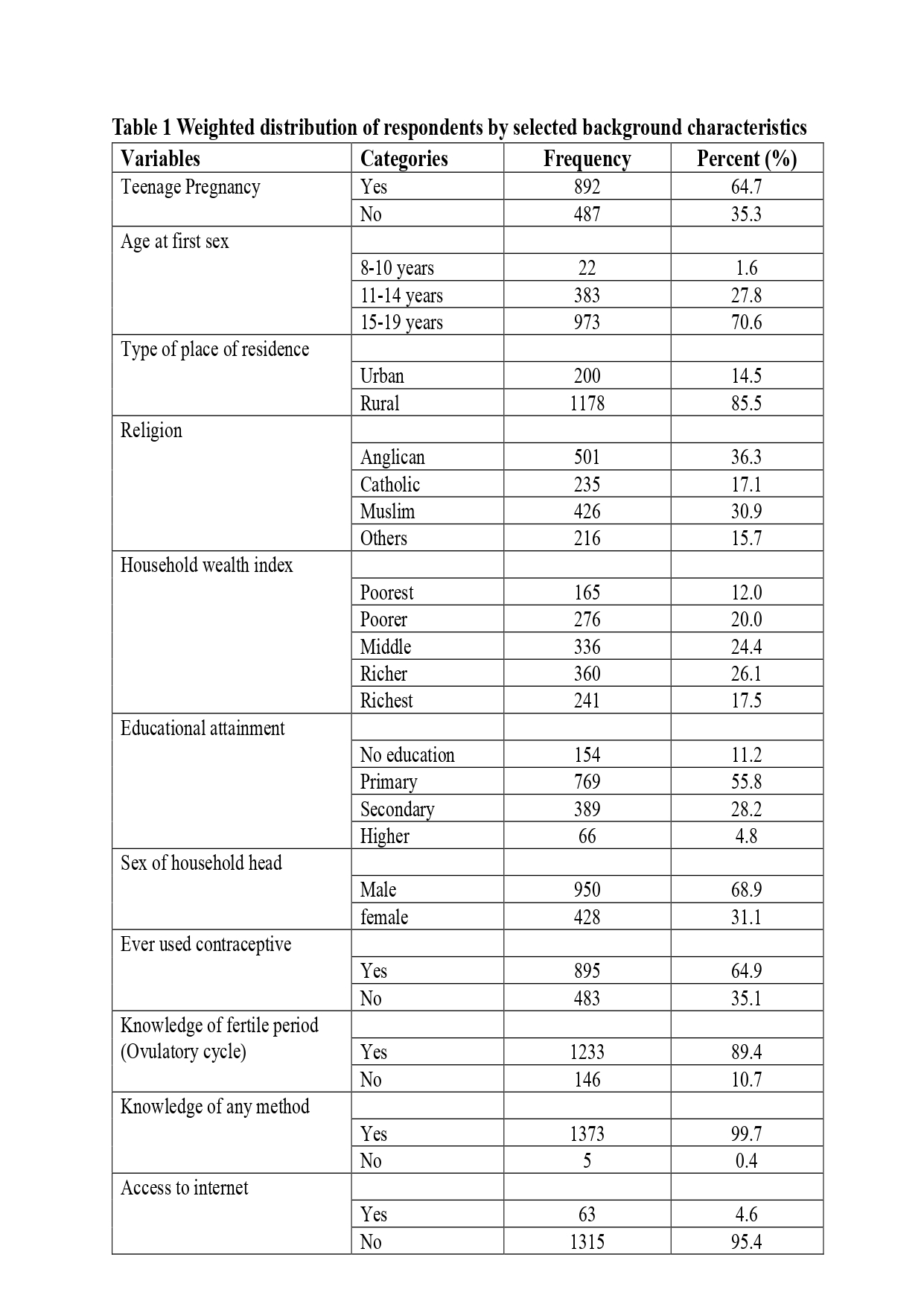PB26-Predictors of teenage Pregnancy in Busoga Region, Uganda: An analysis of the 2016 Uganda Demographic and Health Survey
Conference
65th ISI World Statistics Congress
Format: CPS Poster - WSC 2025
Session: CPS Posters 14
Wednesday 8 October 4 p.m. - 5 p.m. (Europe/Amsterdam)
Abstract
Background: Teenage pregnancy is a pressing public health and social issue worldwide, particularly prevalent in low- and middle-income countries. Uganda, among these countries, grapples with high rates of teenage pregnancies, posing a variety of health risks to both the mother and child. This study aims to investigate the predictors of teenage pregnancy in the Busoga region of Uganda using data from the 2016 Uganda Demographic and Health Survey.
Methods: A cross-sectional study design was utilized within the Busoga region, drawing from the Uganda Demographic and Health Survey secondary data focusing on female teenagers aged 13–19 years. A sample size of 1,378 respondents from the 2016 dataset was selected for analysis. Logistic regression was employed to identify predictors of teenage pregnancy.
Results: The prevalence of teenage pregnancy was 65%. Logistic regression analysis revealed significant associations between teenage pregnancy and various factors. Age at first sexual encounter (AOR=4.25, 95% CI 1.15 – 15.75, p=0.031), rural residency (AOR=1.59, 95% CI 1.03 – 2.45, p=0.038), and Catholic religion (AOR=1.73, 95% CI 1.00 – 2.99, p=0.048) were associated with increased risk. Conversely, higher educational attainment, specifically secondary (AOR=0.25, 95% CI 0.14 – 0.44, p=0.000) and higher education (AOR=0.11, 95% CI 0.04 – 0.34, p=0.000), showed a protective effect. Surprisingly, adolescents with a history of contraceptive use exhibited a higher likelihood of teenage pregnancy (AOR=1.50, 95% CI 1.13 – 2.01, p=0.006), while lack of knowledge about the ovulatory cycle was associated with reduced risk (AOR=0.53, 95% CI 0.31 – 0.89, p=0.018).
Conclusion: To effectively combat teenage pregnancy in Uganda, various interventions must be implemented that address the complex interaction of socio-demographic factors. This includes promoting early sexual education, improving contraceptive use and education, focusing on rural areas with specific interventions, involving religious and community leaders, increasing awareness about the ovulatory cycle, and establishing supportive policies and programs. By adopting a comprehensive approach that addresses these factors holistically, Uganda can mitigate the adverse consequences of teenage pregnancy on mother and child health outcomes, ensuring a brighter future for its adolescents.
Key words: Teenage Pregnancy, Busoga Region, Demographic Health Survey, Uganda
Figures/Tables
Table 1

Table 2

Table 3


